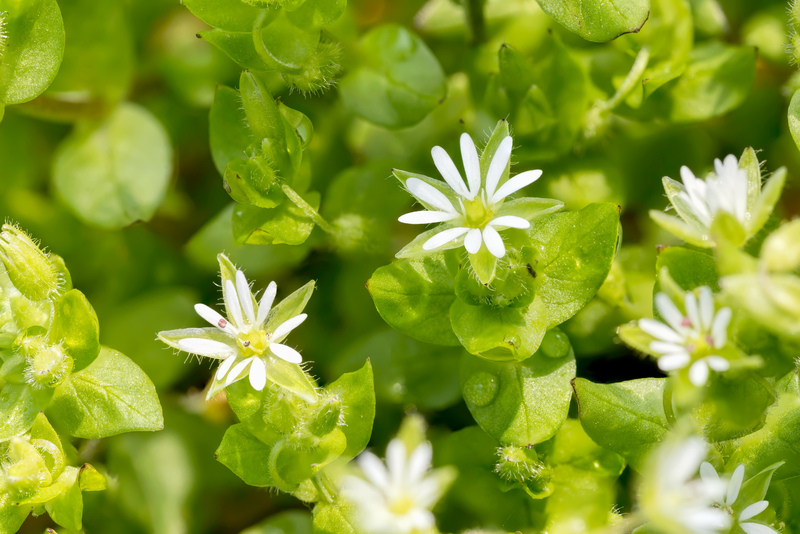Gardening for Kids: Making Nature Fun and Safe
Posted on 06/06/2025
Gardening for Kids: Making Nature Fun and Safe
Gardening can be one of the most rewarding activities for children, sparking curiosity, fostering responsibility, and instilling a deep love for nature. But, for parents and educators alike, the primary goal is to make gardening for kids enjoyable and secure. This comprehensive guide explores engaging ways to introduce gardening, safety considerations, recommended plants, and ideas for making gardening a delightful family experience.
Why Gardening Is Beneficial for Children
Gardening for children is more than just growing flowers and vegetables; it's a holistic activity that benefits kids physically, emotionally, and mentally. When kids get involved with planting and caring for plants, they gain much more than a few tomatoes or marigolds for their effort.
- Physical development: Gardening helps kids develop fine and gross motor skills as they dig, plant, water, and harvest.
- Sensory stimulation: Children learn by touching soil, smelling plants, and seeing colors and insects.
- Emotional well-being: Working with plants can reduce stress, encourage relaxation, and boost mood.
- Cognitive growth: Young gardeners learn about science, weather, life cycles, and responsibility through hands-on experience.
- Healthy eating habits: Kids who grow their own food are more likely to eat fruits and vegetables.
Engaging in gardening with kids also provides quality time for families, offering an unplugged, screen-free zone that encourages open conversations and teamwork.

How to Get Kids Excited About Gardening
Start with Simple and Quick-Reward Projects
When it comes to gardening for kids, instant gratification is a great motivator. Choose plants that germinate or flower quickly, like radishes, sunflowers, and nasturtiums. These offer visible growth within days or weeks, sparking excitement and keeping interest high.
- Sprouting beans in a jar: Place a damp paper towel in a clear jar, add beans, and watch roots and shoots grow.
- Grow microgreens: These tiny greens are fast and can be harvested in as little as 10 days.
- Plant sunflowers: Tall, cheerful, and fast-growing, sunflowers are a favorite for children's gardens.
Give Children Ownership
Offering a small plot, raised bed, or container just for your child helps them feel responsible and proud. Let them personalize their garden area with painted stones, handmade labels, or unique decorations.
Make Gardening Playful and Interactive
- Create a garden scavenger hunt for treasures like colored leaves, worms, or flowering plants.
- Introduce themed gardens like a "pizza garden" with tomatoes, basil, and oregano, or a "butterfly garden" filled with nectar-rich flowers.
- Encourage imaginative play by adding fairy houses, miniature animals, or gnome statues among the plants.
Essentials of Safe Gardening for Kids
Ensuring safety is an essential aspect of gardening with children. Here's how to keep nature fun and risk-free:
Choose the Right Tools
- Opt for child-sized, lightweight tools with rounded edges.
- Avoid rusty or sharp adult tools.
- Store equipment safely when not in use.
Select Child-Friendly Plants
Some plants are poisonous or have thorns. Always choose safe varieties. Edible gardening for kids with herbs, salad greens, and root vegetables is a safe bet.
- Safe flowers: Marigolds, sunflowers, pansies, snapdragons
- Safe vegetables: Carrots, radishes, peas, cherry tomatoes (supervised harvest)
- Safe herbs: Basil, mint, parsley
Be Aware of Allergies and Sensitivities
- Check for pollen allergies before selecting flowers.
- Avoid plants with sticky sap or spiky leaves.
Practice Sun and Skin Protection
- Apply sunscreen generously.
- Wear hats, gloves, and lightweight long sleeves.
- Schedule gardening during cooler hours, such as early morning or late afternoon.
Teach Good Hygiene
- Remind kids to wash hands after gardening, especially before eating.
- Have hand sanitizer available in the garden area.
Watch Out for Wildlife
- Supervise young children, especially in areas where insects, spiders, or small animals could hide.
- Teach kids not to touch unidentified bugs or plants.
Best Gardening Activities for Different Age Groups
Toddlers (Ages 2-4)
- Watering plants with small watering cans
- Digging soil and filling pots
- Planting large seeds like peas or beans
- Harvesting strawberries or cherry tomatoes (supervised)
Preschoolers (Ages 4-6)
- Transplanting seedlings into garden beds
- Making plant markers with craft materials
- Observing insects and worms with magnifying glasses
School-age Kids (Ages 7-12)
- Planning and designing small garden plots
- Growing vegetables from seeds
- Keeping a gardening journal with drawings and notes
- Learning about composting and recycling organic waste
Teens (Ages 13+)
- Starting a vegetable garden from scratch
- Building raised beds or vertical gardens
- Creating DIY irrigation systems
- Researching companion planting and organic pest control
Creative Garden Activities That Teach and Entertain
1. Garden Art and Crafts
Let children express their creativity by making decorative plant markers, painted pots, or stepping stones. Use natural materials, such as twigs and leaves, to create fairy houses or insect hotels.
2. Science Experiments in the Soil
- Seed sprouting experiment: Test how seeds grow in different conditions--soil, paper, or sand.
- Worm observation: Build a wormery to observe how worms help decompose organic matter.
3. Fun Plant-Themed Games
- Plant bingo: Spot various plants, bugs, or flowers for a reward.
- Nature scavenger hunts: Make lists of items to find in the garden.
4. Healthy Harvest Cooking
Kids love eating what they grow! Try easy recipes like vegetable skewers, fruit salads, or berry smoothies using their own harvest. This is one of the best benefits of gardening for kids.
Ideas for Small Spaces: Balcony and Windowsill Gardens
No backyard? No problem. Gardening for kids in small spaces is completely feasible. Use containers, recycled pots, or vertical gardens for balconies, patios, or windowsills.
- Grow herbs like basil, chives, and mint in small pots.
- Plant lettuce, spinach, or radishes in window boxes.
- Use hanging baskets for strawberries or cherry tomatoes.
DIY Miniature Gardens
Terrariums and fairy gardens are fascinating projects for apartments and classrooms. Let children design tiny worlds for their favorite toy animals or figurines using moss, small stones, and mini plants.
Seasonal Gardening With Kids
Gardening is possible year-round. Teach children about plant life cycles and seasonal changes by planning activities for every season:
- Spring: Seed starting indoors, planting cold-tolerant crops like peas, lettuce, or radishes.
- Summer: Flower gardening, harvesting vegetables, monitoring pollinators in the garden.
- Fall: Leaf crafts, planting bulbs for spring, composting leaves.
- Winter: Forcing bulbs indoors, making bird feeders, observing how gardens rest.
Eco-Friendly Practices: Teaching Kids Sustainability
Start Composting Together
Show kids how kitchen scraps turn into rich soil by starting a compost bin or worm farm. This teaches them about recycling, organic matter, and reducing waste.
Water Conservation Lessons
- Use watering cans instead of hoses to save water.
- Collect rainwater with barrels for garden use.
- Mulch plants to keep soil moist and reduce watering needs.
Choosing the Right Tools and Supplies for SafeKids Gardening
Kid-friendly gardening tools are essential for making the activity both enjoyable and safe. Look for:
- Lightweight, easy-to-grip tools made of plastic or wood
- Rubber-tipped trowels and hand rakes for little hands
- Gardening gloves sized for children to protect from dirt and minor scrapes
- Sturdy, child-sized watering cans
Don't forget a small stool or kneeling pad to keep children comfortable while working close to the ground.

Encouraging a Lifelong Love of Gardening
Ultimately, the goal of gardening for children is to inspire curiosity, awe, and respect for the natural world. By keeping activities fun and accessible, you'll instill values of patience, responsibility, and sustainability that will stay with children for life. Celebrate successes--even a single sprouting seed or a small bouquet is an achievement worth honoring!
- Take photos of your gardening adventures to make a scrapbook or digital slideshow.
- Share extra produce with friends, neighbors, or local food banks to teach generosity.
- Join community gardens or after-school garden clubs for social connection.
Conclusion: Nature is the Ultimate Playground
Gardening for kids truly makes nature fun, safe, and meaningful. With a thoughtful approach that combines play, learning, and safety, you'll watch young gardeners grow--in both their gardens and their hearts. Whether in a backyard, a schoolyard, or on a sunny windowsill, gardening offers a gateway to a world of wonder, creativity, and lifelong growth. So grab some seeds, dig in, and enjoy the blooms of memories you'll create along the way.
Looking for more fun family gardening ideas or advice for gardening with kids? Keep exploring resources and guides--your next green adventure is waiting just around the corner!

